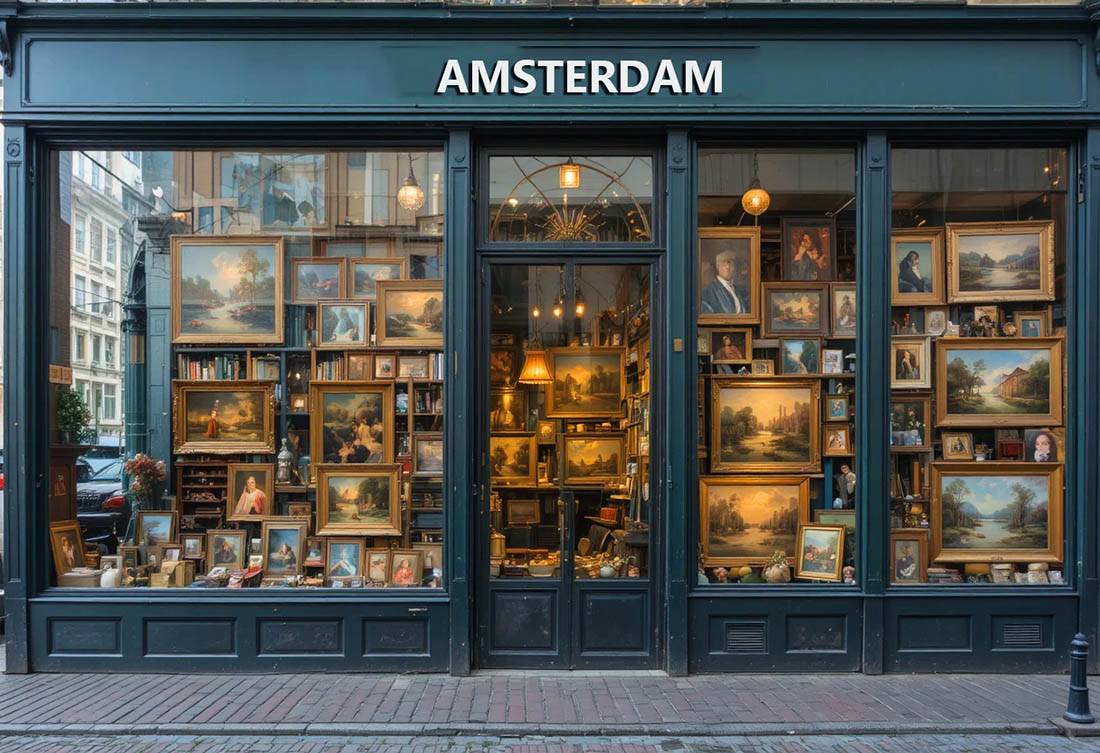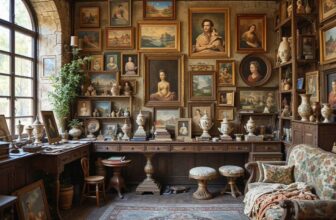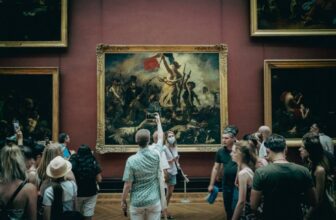
Amsterdam’s Art Secrets: The Best Places to Hunt for Antique Paintings
Discovering the City’s Hidden Art Treasures
Amsterdam has long been one of Europe’s greatest cities for art lovers. From Rembrandt’s masterpieces in the Rijksmuseum to contemporary exhibitions in the Jordaan, the Dutch capital’s artistic DNA runs deep. But beyond the famous galleries and museums lies another, more intimate world , that of antique paintings, rare artworks, and forgotten canvases waiting to be rediscovered.
Whether you’re a serious collector, an art history enthusiast, or simply a traveler with an eye for beauty, antique art hunting in Amsterdam can be one of the most rewarding cultural experiences in Europe. This guide explores where to find antique paintings in Amsterdam, including its best markets, galleries, dealers, and hidden gems , plus tips on how to navigate the city’s antique art scene like a pro.
Why Amsterdam is a Haven for Antique Art Collectors
Amsterdam’s connection to art goes far beyond its Golden Age masters. The Netherlands has always been a nation of traders and collectors, and the capital’s merchants once brought artworks, fine furniture, and exotic curiosities from around the world. Many of these treasures now circulate through antique shops, art fairs, and private galleries, giving today’s collectors a chance to own a piece of history.
Moreover, the Dutch are renowned for their expertise in art restoration and authentication. Many dealers in Amsterdam work closely with restorers and art historians, ensuring the pieces they sell are genuine and well-preserved. Whether you’re searching for a 17th-century oil painting, a 19th-century Dutch landscape, or a rare modernist work, you’ll find that the city offers remarkable variety and credibility.
The Best Places to Find Antique Paintings in Amsterdam
Let’s explore where to go when you’re hunting for antique art in the city. From bustling markets to refined galleries, here are the top locations where collectors and enthusiasts can discover antique paintings in Amsterdam.
1. The Spiegelkwartier (Antique District)
If there’s a heart of Amsterdam’s antique art scene, it’s the Spiegelkwartier, or Mirror Quarter. Located just across from the Rijksmuseum, this historic neighborhood has been home to art dealers and antique shops for more than a century.
Walking through the Spiegelgracht and Nieuwe Spiegelstraat, you’ll find dozens of galleries and antique shops specializing in everything from Old Master paintings to vintage Dutch interiors. Many stores here have family histories stretching back generations, with collections that span the 16th to 20th centuries.
Notable spots include:
Douwes Fine Art – Established in 1770, this is one of Amsterdam’s oldest art galleries. It specializes in Old Master paintings, 19th-century works, and early modern art.
Kunsthandel Frans Jacobs – Offers an exquisite selection of Dutch and Flemish paintings, drawings, and watercolors.
Galerie Wetering – A refined space where traditional meets modern, featuring both historical and contemporary works.
Pro tip: Take your time exploring the area. Many galleries welcome walk-ins, and even if you’re not buying, you can learn a lot from the curators and owners who are usually happy to discuss their collections.
2. The Jordaan: Bohemian Charm Meets Antique Elegance
The Jordaan district, with its maze of narrow streets, canals, and converted warehouses, is another excellent area for art lovers. Historically a working-class neighborhood, the Jordaan has evolved into a creative hub full of boutique galleries, vintage shops, and small-scale dealers.
You’ll find hidden gems here that might not appear in traditional guidebooks. Many of these shops mix antique art with vintage décor and collectibles, creating a casual, treasure-hunting atmosphere.
Places to explore:
Elandsgracht and Prinsengracht – Streets lined with eclectic art stores where you can sometimes stumble upon antique Dutch portraits or maritime paintings.
De Looier Antiekcentrum – A must-visit (see below), located right on the edge of the Jordaan.
Galerie Mokum – While it focuses mostly on realism and contemporary works, it often showcases artists inspired by classic Dutch masters , an interesting bridge between antique and modern.
3. De Looier Antiques Centre
The Antiekcentrum Amsterdam (De Looier) is one of the largest indoor antique markets in the Netherlands. Located at Elandsgracht 109, it features over 70 independent dealers offering a vast range of antiques , from fine silver and jewelry to antique furniture and, of course, paintings.
The atmosphere here is relaxed, yet filled with potential discoveries. You can browse everything from 18th-century oil portraits to vintage maritime scenes and romantic 19th-century landscapes. Some dealers specialize in Dutch school paintings, while others offer European works sourced from estates and private collections.
Why visit De Looier:
Open year-round and indoors , perfect for rainy Amsterdam days.
Prices range from affordable to investment-level, catering to all kinds of buyers.
Staff and sellers are knowledgeable and happy to share the history behind each piece.
Tip: Visit early in the week when it’s quieter, giving you more time to ask questions and negotiate prices.
4. Amsterdam Art & Antiques Week (Formerly PAN Amsterdam)
If you happen to visit Amsterdam in November, PAN Amsterdam is a can’t-miss event. It’s the city’s premier art, antiques, and design fair, held annually at the RAI Exhibition Centre. Collectors from all over Europe attend this prestigious showcase, which features paintings, sculptures, decorative arts, and rare antiques from reputable galleries.
PAN Amsterdam is not just for high-end buyers , it’s also a fascinating educational experience. Many galleries display museum-quality artworks and offer insights into art authentication, restoration, and collecting trends.
Highlights:
Exhibitors range from leading Dutch galleries to international art houses.
Expert vetting ensures authenticity and quality.
A great way to meet dealers and make long-term contacts in the art world.
5. Waterlooplein Market: For the Adventurous Collector
Not all antique discoveries happen in polished galleries. Sometimes, the best finds appear at open-air markets , and Amsterdam’s Waterlooplein Market is a perfect example.
This lively flea market has been running since the 19th century and remains a favorite for bargain hunters. While most stalls sell vintage clothes, books, and trinkets, you can occasionally stumble upon old prints, paintings, or small oil studies that reveal unexpected value.
Tips for antique art hunting here:
Bring cash , many vendors don’t take cards.
Arrive early for the best selection.
Be prepared to haggle, but always stay polite.
Don’t expect perfectly preserved art , instead, look for pieces with character and potential.
Waterlooplein is more about the thrill of discovery than guaranteed masterpieces, but that’s part of its charm.
6. Auction Houses and Art Dealers
For serious collectors, Amsterdam offers several respected auction houses and private art dealers specializing in antique paintings. These venues often handle works from estate sales and private collections, meaning you can find authentic historical pieces with traceable provenance.
Recommended places:
Christie’s Amsterdam – Occasionally hosts auctions featuring Dutch and European paintings.
Venduehuis der Notarissen – The oldest auction house in the Netherlands, based in The Hague but with strong Amsterdam ties.
Zeeuws Veilinghuis – Known for its fine art and old masters sales, sometimes with online participation from Amsterdam buyers.
Insider advice: Many dealers also host small, private viewings by appointment. If you’re looking for a specific period or artist, contacting them directly can lead to exclusive opportunities.
7. Museums and Their Shops
Though not primarily for buying, visiting Amsterdam’s major museums can deepen your understanding of antique art , and occasionally, their gift shops or affiliated sales events offer reproductions or minor works from lesser-known artists.
Don’t miss:
Rijksmuseum – The definitive place to study Dutch masters and understand the evolution of Dutch painting.
Rembrandt House Museum – Offers insights into 17th-century art techniques and sometimes partners with galleries for temporary exhibitions.
Van Gogh Museum – Focused on modern art, but often exhibits 19th-century works that bridge the antique and modern worlds.
Hidden Finds: Off-the-Beaten-Path Art Discoveries
Beyond the well-known districts, Amsterdam hides smaller, lesser-known venues where antique paintings occasionally appear.
Art in Old Churches and Monasteries
Amsterdam’s historic churches sometimes hold art sales to support restoration projects. Paintings and icons from the 18th and 19th centuries occasionally appear in these charitable exhibitions.
Estate Sales and Local Auctions
Keep an eye on local listings and community bulletin boards. Many estate sales in the canal district or surrounding suburbs feature inherited artworks, some of which turn out to be genuine antiques.
Boutique Hotels and Concept Stores
Some luxury hotels and boutique shops in Amsterdam collaborate with art dealers to display antique pieces for sale. You might find an early Dutch landscape or portrait adorning a hotel lobby , often with a discreet price tag.
Understanding Dutch Art Styles: What to Look For
To appreciate and evaluate antique paintings in Amsterdam, it helps to understand the main styles and periods you’ll encounter:
Dutch Golden Age (17th century): Featuring artists like Rembrandt, Vermeer, and Frans Hals. Common themes include portraits, domestic scenes, and maritime subjects.
Romantic Period (18th–19th century): Characterized by moody landscapes, pastoral scenes, and dramatic skies , very popular among collectors.
Hague School (late 19th century): Often considered the Dutch impressionists, with soft tones and natural light.
Symbolist and Early Modern Works (1900–1930): These may not be “antique” by strict definition but are increasingly collectible due to their historical importance.
Understanding these periods will help you recognize genuine value and artistic merit during your search.
Antique Art Hunting Etiquette in Amsterdam
Amsterdam’s art scene is friendly but deeply rooted in tradition. To make a good impression:
Greet dealers respectfully and show genuine interest.
Don’t touch artwork without permission.
Be honest about your budget , many dealers appreciate transparency and may suggest suitable alternatives.
Avoid aggressive bargaining; polite negotiation is preferred.
Remember, building a relationship with dealers can open doors to private collections and insider opportunities.
The Joy of Collecting Antique Paintings in Amsterdam
Hunting for antique art in Amsterdam is more than just shopping , it’s a journey through centuries of culture and craftsmanship. Every painting tells a story, and every discovery connects you to the city’s artistic legacy.
From the elegant galleries of the Spiegelkwartier to the bustling charm of De Looier, Amsterdam offers countless opportunities to uncover artworks that carry the spirit of its rich history. Whether you return home with a masterpiece or simply with memories of your explorations, you’ll have experienced one of the most authentic sides of Dutch culture.
Where to Begin Your Antique Art Adventure
For first-time visitors, here’s a suggested itinerary for a weekend dedicated to discovering antique paintings in Amsterdam:
Day 1:
Start at the Rijksmuseum for inspiration, then explore the Spiegelkwartier. Visit Douwes Fine Art and neighboring galleries.
Day 2:
Head to De Looier Antiques Centre in the Jordaan. In the afternoon, wander through Waterlooplein Market for spontaneous finds.
Day 3:
If visiting in November, spend the day at PAN Amsterdam. Otherwise, explore small galleries along the Prinsengracht or schedule an appointment with a private art dealer.
By combining exploration with a touch of curiosity, you’ll discover that Amsterdam is not only a city of canals and tulips but also one of Europe’s most rewarding destinations for antique art enthusiasts.




